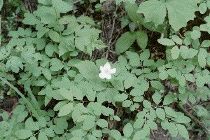
Biology
Biology Lab: AP Investigation #5 - Measuring Dissolved Oxygen Produced by Photosynthesis

Lab Exercise
Biology Lab: Oxygen Production in Photosynthesis
Concept: The process of photosynthesis requires energy in the form of light to drive the reactions that reconfigure CO2 and H2O to produce glucose and oxygen gas (O2). The rate at which oxygen is produced can be used ot measure the rate of the photosynthetic process.
Goal: To determine how availability of light affects the rate of photosynthesis by measuring oxygen production.
AP Exam preparation -- Doing the AP version of this lab:
Please read through the AP Laboratory Manual, Laboratory #5, Photosynthesis. If you have access to the equipment and materials used in the lab, please perform the lab as indicated in the Manual. If not, you may use the alternate lab below. Complete the Lab Manual worksheets and submit your data to the Moodle Biology Website for comparison with the work of your fellow students.
Alternate Experiment Option #1
Perform Illustrated Guide to Home Biology Experiments, Lab IV-1 Chlorophyll and Photosynthesis:
- Procedure IV-1-1: Observing Carbon Dioxide Uptake
- Procedure IV-1-2: Determining the Effect of Light Intensity on Photosynthesis
Be sure to complete and include in your final report any questions including in the lab instructions.
Alternate Experiment Option #2
If you are unable to obtain all the equipment and materials required by Investigation #6 or the IGHBE lab, you may perform the following alternate lab that uses more readily accessible chemicals and methods to accomplish the same goal. However, since you should be familiar with the AP Lab as designed, please review that investigation in your lab book.
Materials and Equipment
Unfortunately the lab requires a kit to do "correctly" because it trains you on the Winkler method. You may use any method you like to determine the amount of dissolved oxygen in water. Check out the aquarium supply store for possibilities: Oxygen lab tests are available that allow you to do O2 tests from aquarium supply stores.
Procedure
Measure the dissolved oxygen levels in water of different temperatures, of different salt concentrations, and over time with natural water (from a pond or other source likely to support algae) exposed to different levels of light.
You will need to design much of this lab, based on availability of natural water sources.
- What can you use a sources of water?
- Tap water
- Distilled water
- Natural water source (nearby stream, pond, or lake)
- What oxygen producing organism can you introduce to your water source?
- Aquarium or garden water plants from pet store or garden shop
- Natural plants harvested with natural water source
- No additional plant material (assume enough exists in water source)
- How will you vary the water temperature?
- How will you vary the salt concentration?
- What intervals will you use between measurements of oxygen production?
- How will you measure oxygen production (e.g., count bubbles?)
- How will you organize your data?
- What calculations could you make?
- What graphs could you use to show trends or differences between different scenarios?
Report
Write up your lab experience. Be sure to outline your procedure in detail, record your data, and show examples of your analysis.
© 2005 - 2024 This course is offered through Scholars Online, a non-profit organization supporting classical Christian education through online courses. Permission to copy course content (lessons and labs) for personal study is granted to students currently or formerly enrolled in the course through Scholars Online. Reproduction for any other purpose, without the express written consent of the author, is prohibited.